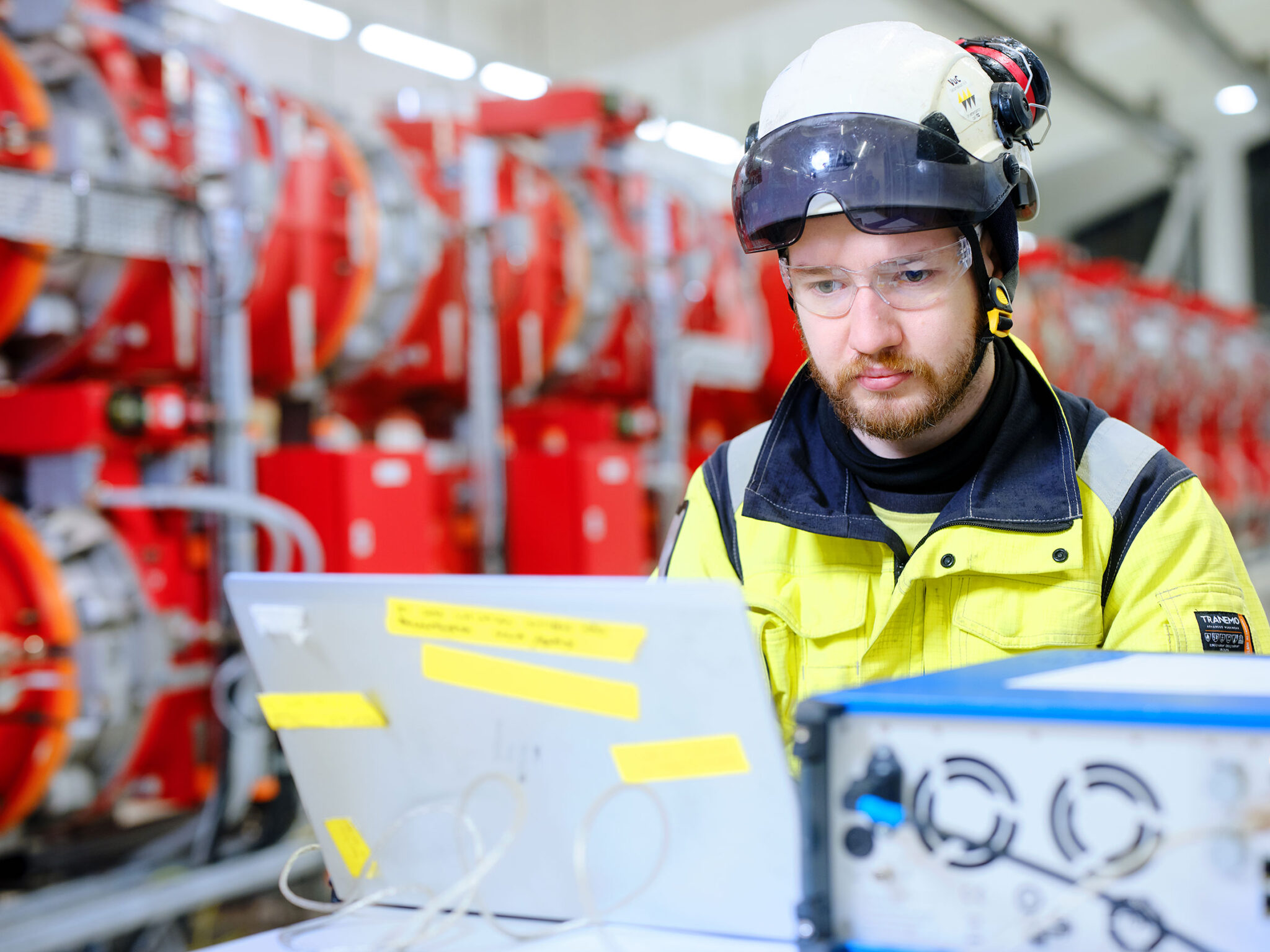Fingrid has engaged in long-term work to promote occupational safety, and this is reflected in the activities of Fingrid and its service providers. Safety is constantly under scrutiny, and people are reminded of it in various ways, such as last year’s Think Before You Act campaign.
“Our goal is based on the principle that everyone should get home from work healthy. That is why we aim for zero accidents,” says Timo Kiiveri, Senior Vice President, Asset Management.
Annual audits
Fingrid’s occupational health and safety management system based on the ISO 45001 standard was audited in October last year. The key aim was to discover how appropriately the processes and practices measured up against the standard, legislation, and the company’s own requirements.
The company can carry out internal audits, but Timo Kiiveri thinks it is good to have an external entity assess whether the company’s processes, documents, requirements and operations are up to date and whether there is room for improvement.
The audit was carried out by LocalTapiola, Fingrid’s provider of occupational accident and occupational disease insurance, which also includes auditing services. According to the three-year plan, LocalTapiola will audit the key sections of the standard annually in order to obtain a good overview of the occupational health and safety management system.
The second of the three audits focused on the processes at work between the client and the service provider, as well as on collaboration.
Jaana Luomanen and Vesa Kynsijärvi, Senior Specialists in Personnel Risk Management at LocalTapiola, familiarised themselves with Fingrid’s processes and documents. They then spent one day interviewing 16 people from various levels in the organisation – business managers, a safety supervisor, project managers and foremen from five service providers and Fingrid’s personnel. An auditing report was prepared with the findings from the interview.
“The audits did not just try to find deviations from the standard or Fingrid’s own requirements.”
“The audits did not just try to find deviations from the standard or Fingrid’s own requirements. We also endeavoured to highlight good practices and potential areas for development, along with recommended action to take,” Kynsijärvi says.
Expertise shared
The audit found no deviations. Instead, it was clear that Fingrid is a pioneer of occupational safety in many ways.
“It shares its safety knowledge and expertise openly. For example, its online training and memos related to the service providers’ occupational safety group are publicly available,” Luomanen says.

The greatest room for development is in communications.
“It is very positive for service providers that they are able to influence the joint safety targets and that their views are taken into account when functions are altered,” Luomanen says.
However, when changes are made, Fingrid needs to ensure that everyone is aware of the new practices.
At Fingrid, as in many other companies, there are several parallel systems between the client and supplier. The same entries need to be made in several places, sometimes manually. There is room for improvement in ensuring that observations receive a timely response and that everyone has the same situational awareness.
Monitoring and fine-tuning
“Fingrid genuinely wants to listen to its service providers and include them in the process of improving safety,” Luomanen states, adding that service providers also gave some suggestions on how to improve collaboration.
“Fingrid genuinely wants to listen to its service providers and include them in the process of improving safety.”
“Based on these, one of our recommendations is that service providers collect things from their own organisations in advance for discussion in the occupational safety group. So far, this has not been done systematically.”
How does the zero accident target sound after the audit?
“In many companies, the target is not accompanied by tangible action, but Fingrid has drawn up some good practical measures to achieve it. The effectiveness of these measures is monitored actively, and changes are made if needed. It is partly because of this that the company has such a high standard of occupational safety,” Kynsijärvi says.
A common cause
Destia and Fingrid have been collaborating on occupational safety development for a long time. Both companies comply with the ISO 45001 standard, which guarantees that they operate on the same occupational safety principles.
“The audits confirmed this,” states Tapio Leskinen, Director of Destia’s Energy Networks business, adding that it was good to participate in the occupational safety audit as a service provider.
Leskinen considers it important that everyone in the chain – the client, supplier and subcontractors – knows the importance of occupational safety, acts accordingly and develops it together.
“Quality management systems ensure a certain way of doing things. However, it is largely the values and attitudes in the work community that determine how safety is implemented in the field.”







